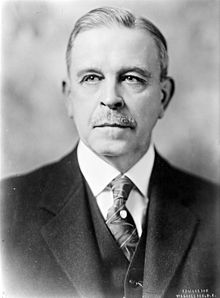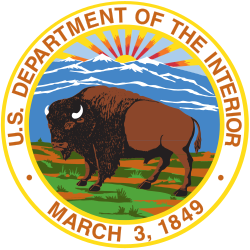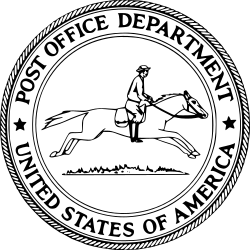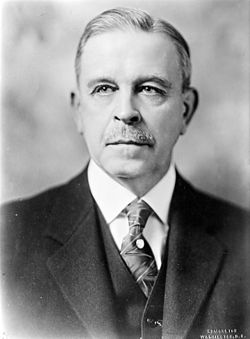Hubert Work

Hubert Work (* 3. Juli 1860 in Marion Center, Indiana County, Pennsylvania; † 14. Dezember 1942 in Denver, Colorado) war ein US-amerikanischer Politiker der Republikanischen Partei, der von 1922 bis 1928 dem US-Kabinett angehörte.
Work schloss sein Medizinstudium an der University of Pennsylvania 1885 als Dr. med. ab. Er ließ sich in Colorado nieder und begründete dort 1896 das Woodcroft Hospital in Pueblo. Im Ersten Weltkrieg gehörte er dem medizinischen Korps der US Army an und bekleidete den Rang eines Lieutenant Colonel. 1920 war er Präsident der American Medical Association.
Politisch stieg Hubert Work zunächst innerhalb der Republikanischen Partei auf, deren Sektion in Colorado er im Jahr 1912 leitete. 1920 gehörte er der Delegation seines Staates bei der Republican National Convention an; dem Republican National Committee stand er von 1928 bis 1929 als Chairman vor.
1914 trat Work in einer Nachwahl zum US-Senat an, unterlag aber dem Demokraten Charles S. Thomas, der später auch Gouverneur von Colorado wurde. Work erhielt 39 Prozent der Stimmen, Thomas 40,3 Prozent. Dies war das erste Mal, dass in Colorado – basierend auf dem 17. Verfassungszusatz – ein Senator vom Volk gewählt wurde.
US-Präsident Warren G. Harding berief Hubert Work 1922 als Postminister (Postmaster General) in sein Kabinett. 1923 wechselte er ins Amt des US-Innenministers; diesen Posten behielt er auch, nachdem Harding gestorben war und Calvin Coolidge seine Nachfolge angetreten hatte, bis 1928. Während seiner Zeit als Innenminister wurde es zum Normalfall, dass Indianer die amerikanische Staatsbürgerschaft erhielten.
Hubert Work starb 1942 in Colorado und wurde auf dem Nationalfriedhof Arlington beigesetzt.
Weblinks
- Biografie auf www.americanpresident.org
- Abbildung von Hubert Works Grabstätte in Arlington
- Hubert Work im Miller Center of Public Affairs der University of Virginia (englisch)
- Hubert Work in der Datenbank Find a Grave
| Personendaten | |
|---|---|
| NAME | Work, Hubert |
| KURZBESCHREIBUNG | US-amerikanischer Politiker |
| GEBURTSDATUM | 3. Juli 1860 |
| GEBURTSORT | Marion Center, Pennsylvania |
| STERBEDATUM | 14. Dezember 1942 |
| STERBEORT | Denver, Colorado |
Auf dieser Seite verwendete Medien
Party Logo
Seal of the United States Department of the Interior.
The seal consists of a male bison with the head and body in a left position, standing on a prairie, with mountains and a rising sun in the background, enclosed within two concentric circles, having the words "U.S. Department of the Interior" and the date "March 3, 1849" (when Congress created the department) inscribed in the top and bottom arcs within these circles. See here for more information.
The bison seal dates from 1917, when it was used as the emblem on the initial department flag and thereafter replaced the old version of the seal, which used a federal eagle. The eagle was reinstated for a few years in the 1920s, and a different seal was used from 1968-69, but on both occasions the bison seal was reinstated. For more information see this chapter in The Department of Everything Else: Highlights of Interior History.Seal of the former United States Department of the Post Office.






